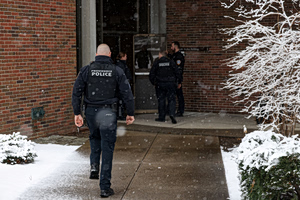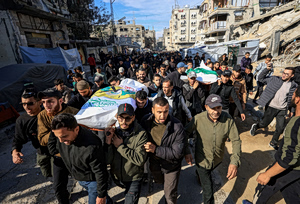KYIV, Ukraine—It’s one decade since police gunned down dozens of civilians on a central street here, the first large-scale bloodshed of Russia’s efforts to keep Ukraine in its grasp.
The protesters killed on Feb. 20, 2014, had been among hundreds of thousands who for months had been opposing the corrupt rule of then-President Viktor Yanukovych , a Russian protégé. He soon fled to Russia and a pro-Western government took over, prompting Russia to send troops to seize Crimea.
In the years that followed, Russia used a variety of methods to try to take control of Ukraine, from a covert invasion of its neighbor’s east to years of political and economic pressure and chicanery. When they failed, Russian President Vladimir Putin launched a full-scale military invasion on Feb. 24, 2022.
That didn’t work either. Ukraine repelled Russian forces from Kyiv and regained about half of the territory that Russia initially seized. However, Moscow still holds nearly 20% of Ukraine’s land.
Here’s a look back at a decade of Ukrainian resistance against Russia—years marked by death and destruction, but also resilience and hope.
2014-15: The first Russian invasion
It was late 2013 when tens of thousands of Ukrainians began rallying and camping out on Kyiv’s main square to protest government corruption and Yanukovych’s pivot to Russia. The protests were peaceful at first but turned violent when police tried to disperse them. On Feb. 20, two days after hours of deadly pitched battles between police and protesters had ended in a tense stalemate, the cops began pulling back and demonstrators followed them up Instytutska Street.
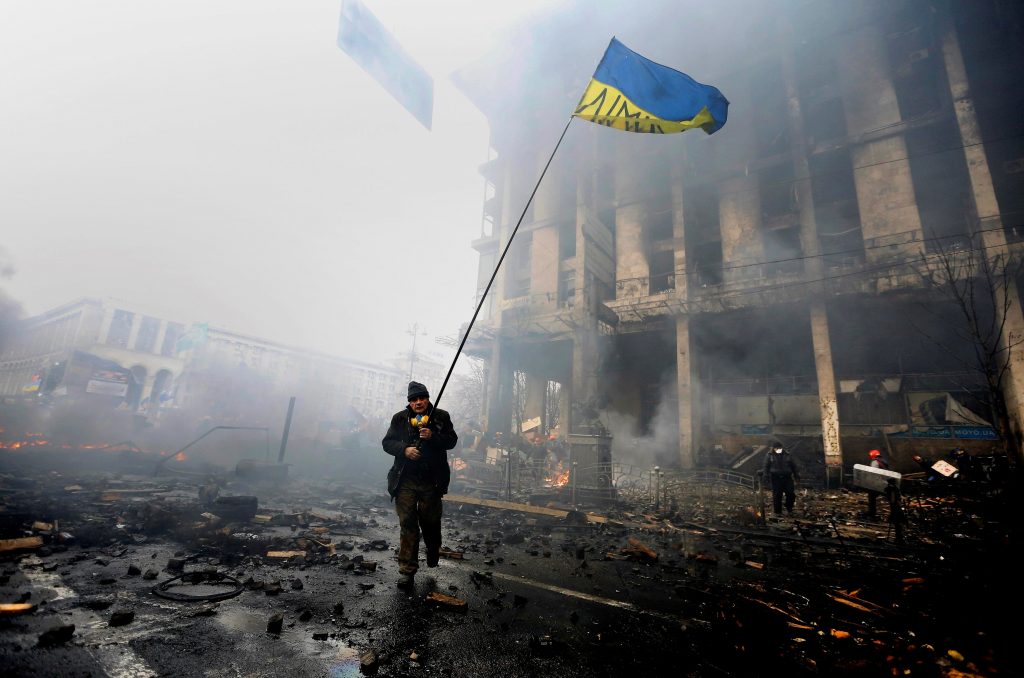
Photo by Yannis Behrakis
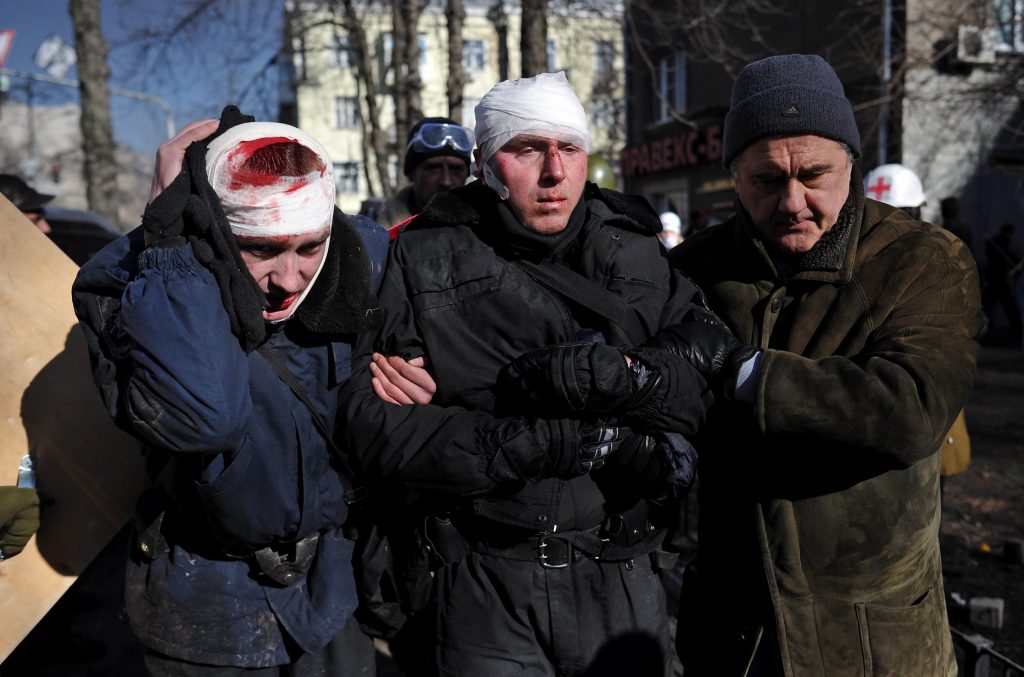
Two wounded policemen are guided to the ambulance cars during an anti-government protest in downtown Kiev, Ukraine, 18 February 2014. Violence erupted in the Ukrainian capital after anti-government protesters broke through a police cordon in front of parliament. Protester marched toward the parliament to demand constitutional reforms that would curb the powers of President Viktor Yanukovych. Ukraine has been mired in political crisis since November after the government backed away from a trade agreement with the European Union and signed a 15-billion-dollar loan deal with Russia instead. EPA/ALEXEY FURMAN
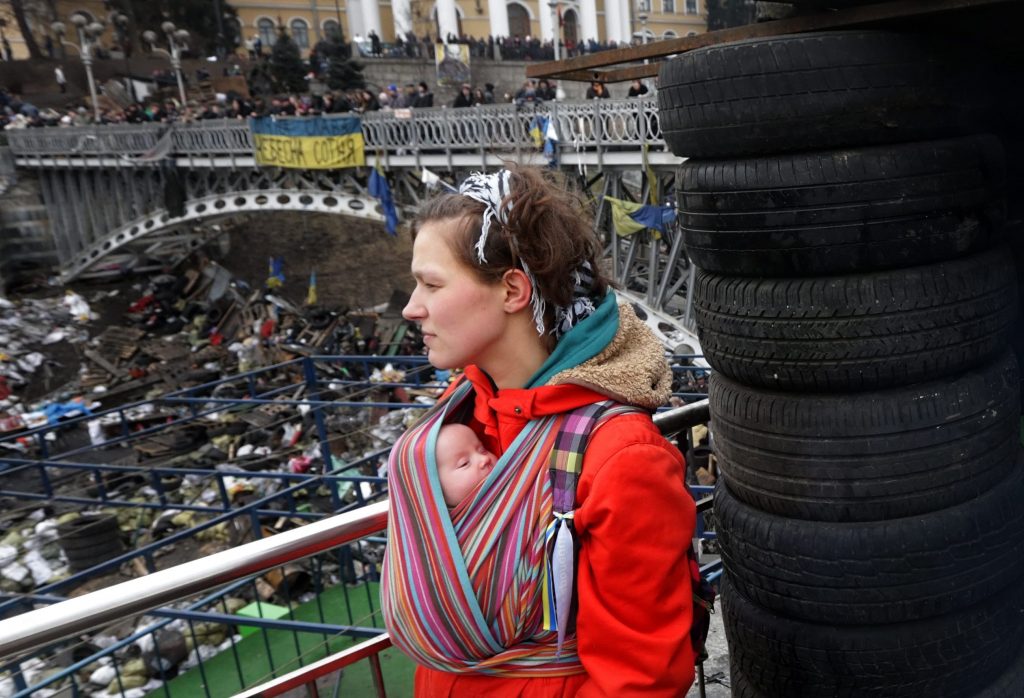
A young Ukrainian woman stands next to a barricade on Institutskaya street in downtown of Kiev, Ukraine, 23 February 2014. Protesters took full control of the Yanukovych residence and provided free access of the premises for Ukrainian and the media. Deposed Ukrainian President Viktor Yanukovych and security forces deserted the capital Kiev as protesters on 22 February moved to secure state institutions and parliament took steps towards forming a transitional government. EPA/MAXIM SHIPENKOV
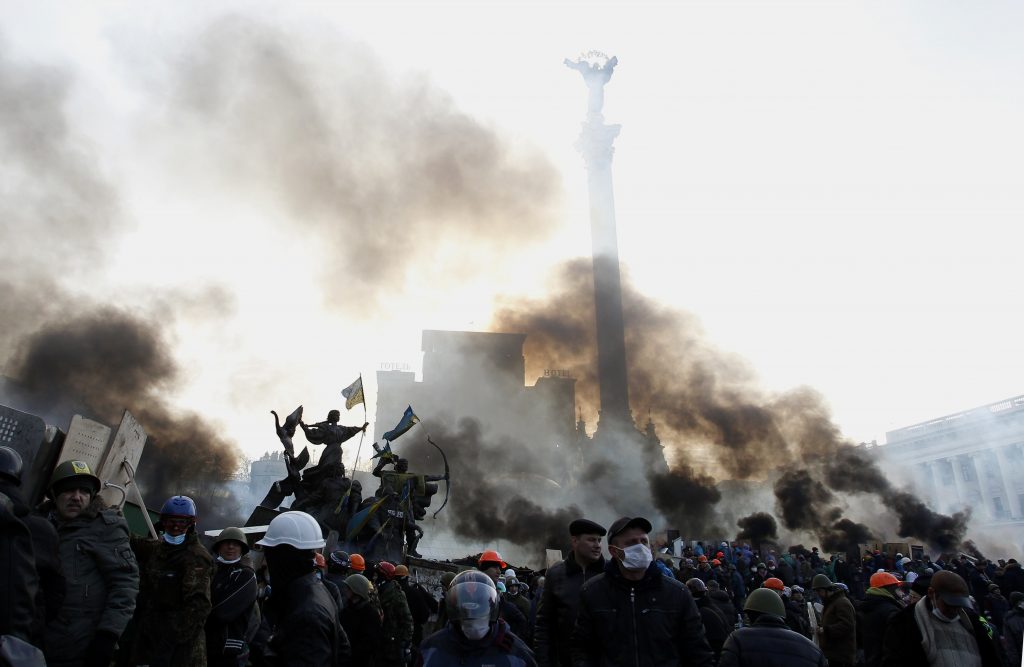
Anti-government protesters gather in Independence Square in central Kiev February 19, 2014. REUTERS/David Mdzinarishvili
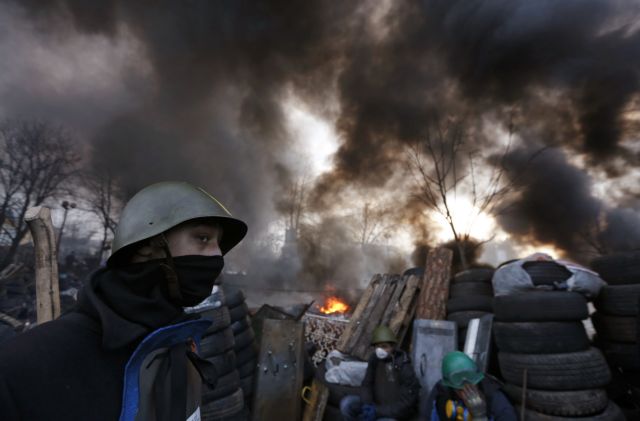
An anti-government protester mans a barricade in Kiev February 21, 2014. REUTERS/Baz Ratner
As a new government sought to take charge in Kyiv, Russia was launching an invasion of Crimea, a peninsula in the Black Sea. The troops bore no insignia and were dubbed “little green men,” a crude effort by the Russians to mask their own involvement. Kyiv was in disarray and struggled to muster a response. The U.S., which had years earlier pressured Ukraine to give up nuclear weapons in return for “security assurances,” did next to nothing, and Putin swiftly annexed the peninsula .
Next, he set his eyes on a bigger prize. After Russian agents tried and failed to whip up revolutions in cities across Ukraine’s east and south, a team of commandos led by a Russian former intelligence officer seized the eastern city of Slovyansk. Russia poured weapons and irregular fighters across the border. As Kyiv fought back, Russia sent in more sophisticated weapons, including a missile launcher that downed the MH17 passenger jet on July 17, 2014, killing all 298 aboard.
After Ukrainian forces gained the upper hand, Moscow sent in its regular army, which dealt Kyiv’s troops a devastating blow in the city of Ilovaisk in September 2014. Ukraine agreed to a cease-fire but Russia continued its assaults, eventually taking the airport in the eastern capital of Donetsk after months of battles. In February 2015, Russian forces surrounded the city of Debaltseve, forcing Ukrainian President Petro Poroshenko to sign a new cease-fire deal known as the Minsk agreement that carved out two would-be statelets in eastern Ukraine that were run from Moscow.
2015-22: Ukraine turns away from Russia
That cease-fire agreement largely halted fighting along the front lines, save for a few hot spots. As Russia sought to destabilize Ukraine from within, the country was shifting away from its former imperial master. Hundreds of Lenin statues were torn down. Ukrainians began switching from speaking Russian to Ukrainian.
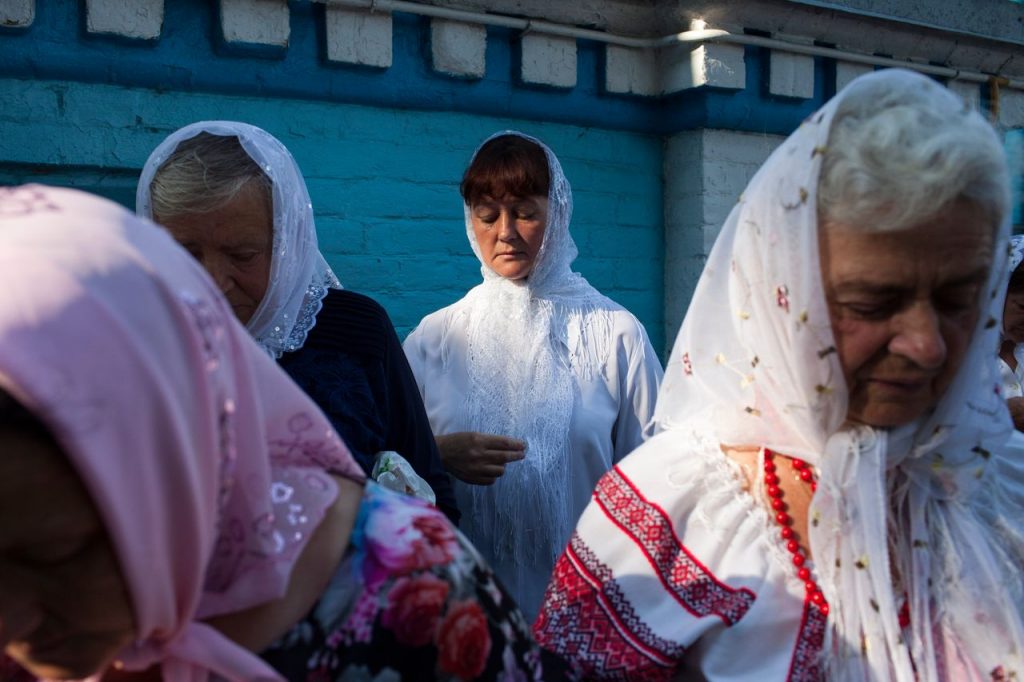
Villagers who support a Ukrainian Orthodox Church independent of Russian influence celebrated a Christian holiday in western Ukraine on Aug. 14, 2018. PHOTO: JOSEPH SYWENKYJ FOR THE WALL STREET JOURNAL
Ukrainians began turning away from the Russian Orthodox Church, for centuries the country’s dominant church. Individual parishes switched allegiance to a church run from Kyiv. Then, in January 2019, Ecumenical Patriarch Bartholomew I, the foremost leader in Orthodox Christianity, granted Ukraine its own independent church , despite Russian opposition.
At the same time, Ukrainians were tired of the war and the corruption that hampered the economy and state institutions. In a presidential election , a television comedian called Volodymyr Zelensky won by a landslide in the first round. He promised to bring an end to the war and root out corruption.
When he took office, that proved harder than he had thought. Putin showed no interest in a deal unless it gave him greater control over Ukraine. So Zelensky began pursuing closer ties with the West. He sought to advance Ukraine’s efforts to join the North Atlantic Treaty Organization and the European Union.
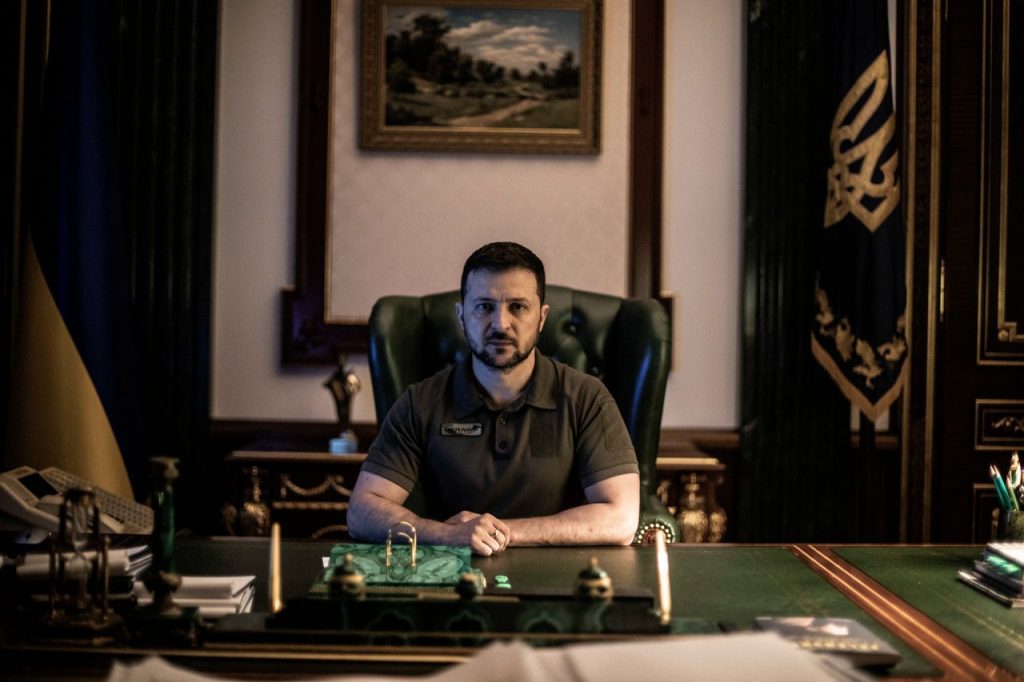
By 2022, Zelensky was a wartime president. He is shown in the presidential office on July 22, 2022. PHOTO: MANU BRABO FOR THE WALL STREET JOURNAL
Those efforts were going nowhere fast, but Putin was making increasingly agitated statements about Ukraine and stating Russian historical claims to Ukrainian territory and the right to rule there. By fall 2021, he was gathering tens of thousands of troops around Ukraine. The U.S. warned he was planning to invade. Zelensky, fearing social and economic upheaval, urged calm.
2022-present: Russia launches biggest land war in Europe since World War II
In the early hours of Feb. 24, Russia launched airstrikes and armored columns against Ukraine. Tanks poured over the border from the north, south and east. The most important initial thrust was on Kyiv, where civilians came to the aid of the army and thwarted the assault. The Russians were halted and, by the end of March, repelled from the capital.
When the Russians withdrew, they left hundreds of civilians dead in towns and villages around Kyiv, including Bucha . That hardened Ukrainian determination and support from the West, which began providing dozens of heavier weapons, such as artillery systems. Russia regrouped and began advancing in the northeast, but by fall its troops were exhausted, and a lightning thrust by Kyiv’s forces took back hundreds of square miles of territory around Ukraine’s second city of Kharkiv.
In the south, Ukraine retook the city of Kherson, a regional capital. By the end of the year, Ukraine had regained half the territory it had lost to Russia since the start of the war. Zelensky received a hero’s welcome on a visit to Washington.
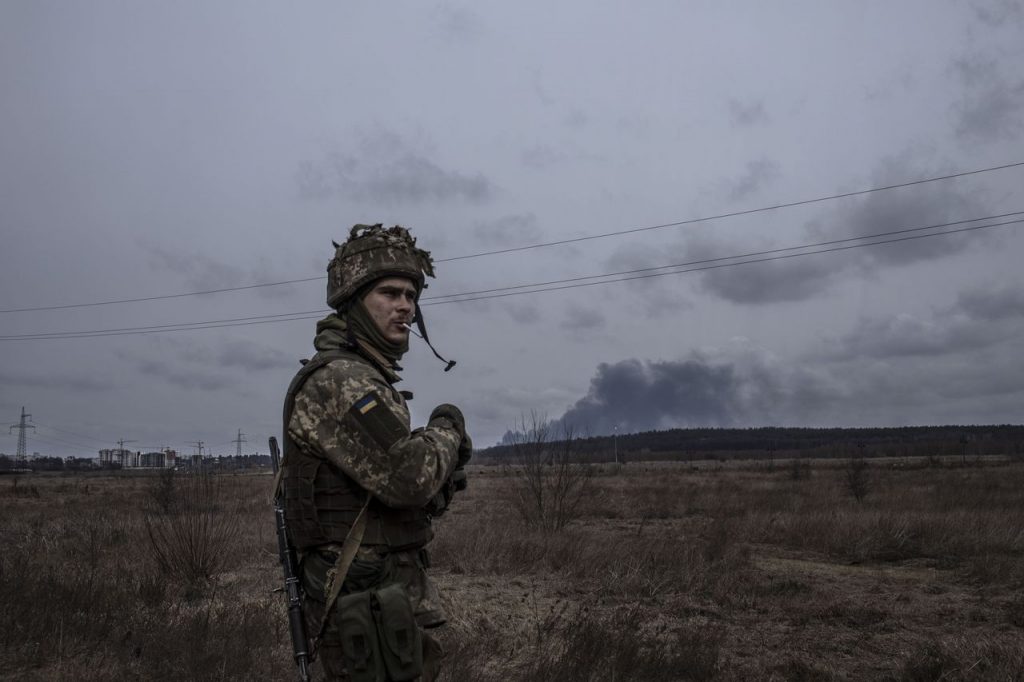
A Ukrainian soldier during a break in fighting on the outskirts of Kyiv on March 4, 2022. PHOTO: MANU BRABO FOR THE WALL STREET JOURNAL
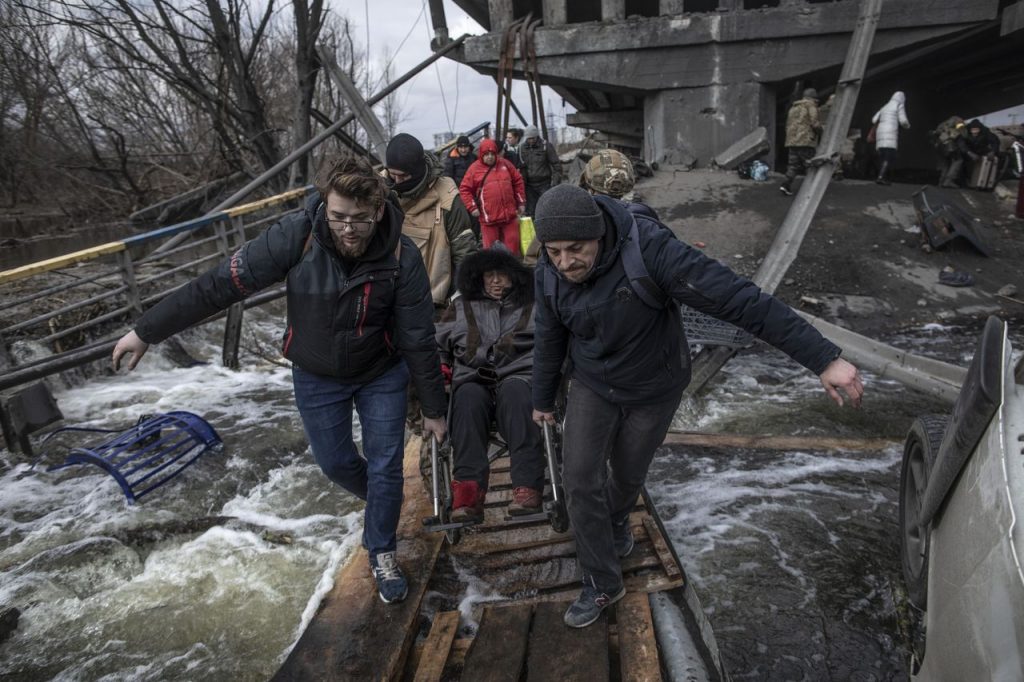
Ukrainian civilians carried a woman on a wheelchair across a river to help her escape from the partially occupied town of Irpin on March 7, 2022. PHOTO: MANU BRABO FOR THE WALL STREET JOURNAL
But Russia had firmed up its defensive lines with thousands of convicts recruited by the Wagner paramilitary group. Wagner led assaults on the eastern city of Bakhmut, the bloodiest battle of the war , that ended in a Russian victory in May 2023.
The following month, Ukraine launched a counteroffensive led by thousands of troops trained and equipped with tanks from the West. It quickly went wrong, as the Russians had built stiff defenses, including minefields and trench systems. By fall, Ukraine had managed to take only one village in the main direction of its assaults, and the operation petered out.
As the full-scale war approached its third year, it became a bloody stalemate. Ukraine, its manpower and equipment depleted, is on the defensive. Russia is inching forward, but has been unable to achieve a large breakthrough. For Ukraine, much now depends on whether Western allies can muster more military support.
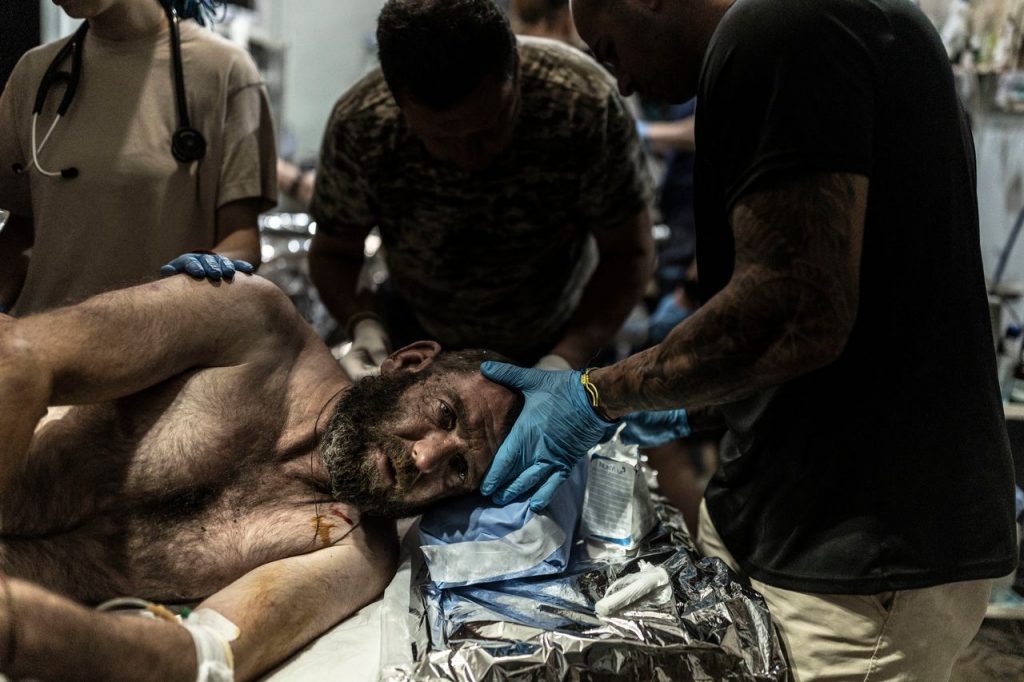
Paramedics treated a wounded Ukrainian soldier in a medical stabilization point near Pokrovske in eastern Ukraine on June 23, 2023. PHOTO: MANU BRABO FOR THE WALL STREET JOURNAL
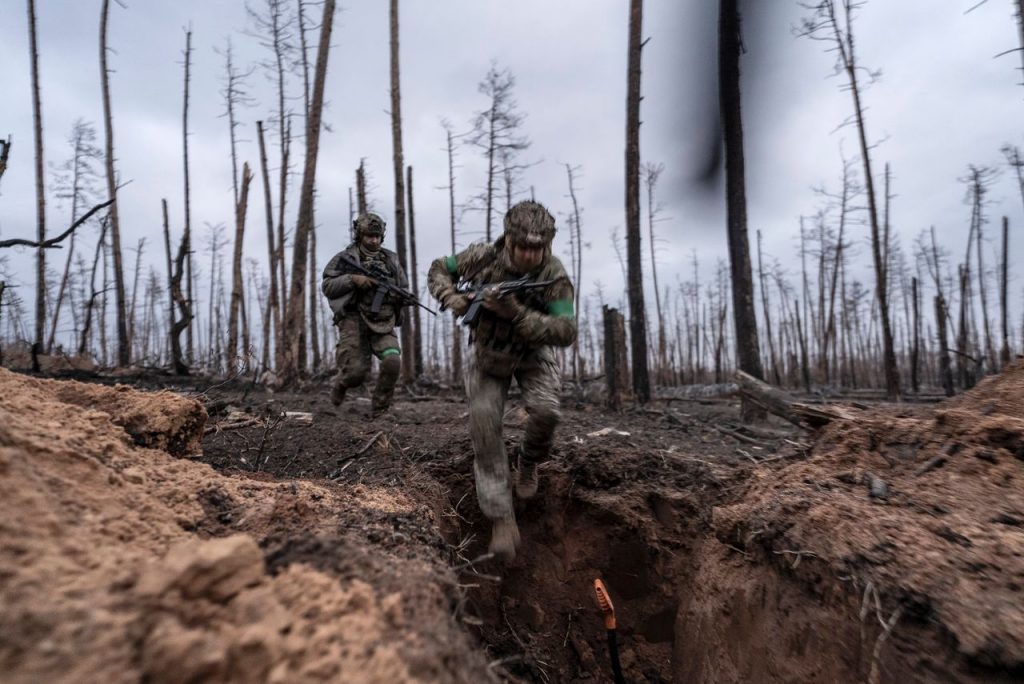
Ukrainian soldiers jumped into a trench near Kreminna on the front line in northeastern Ukraine on Jan. 6, 2024. PHOTO: MANU BRABO FOR THE WALL STREET JOURNAL
Write to James Marson at james.marson@wsj.com

